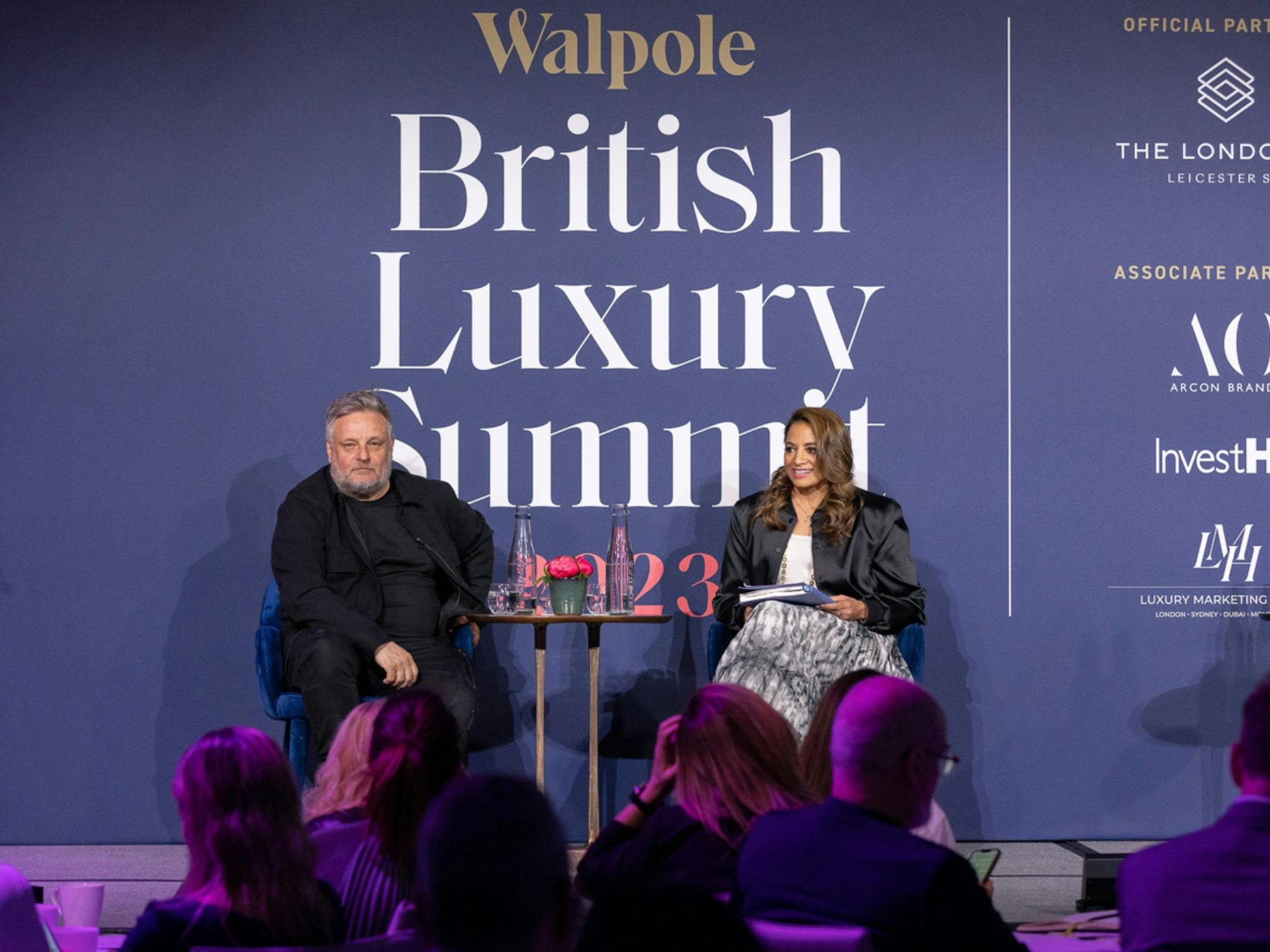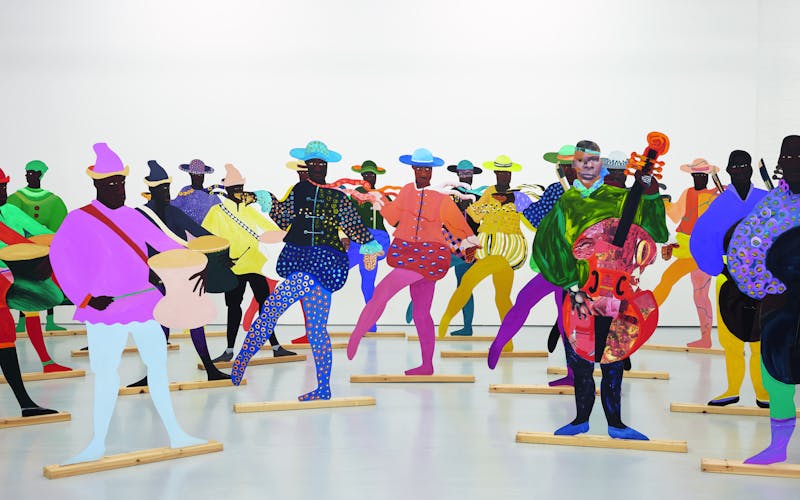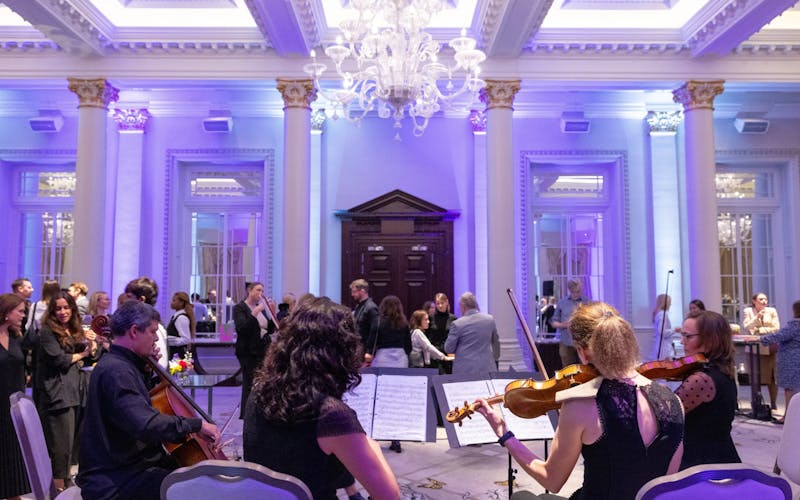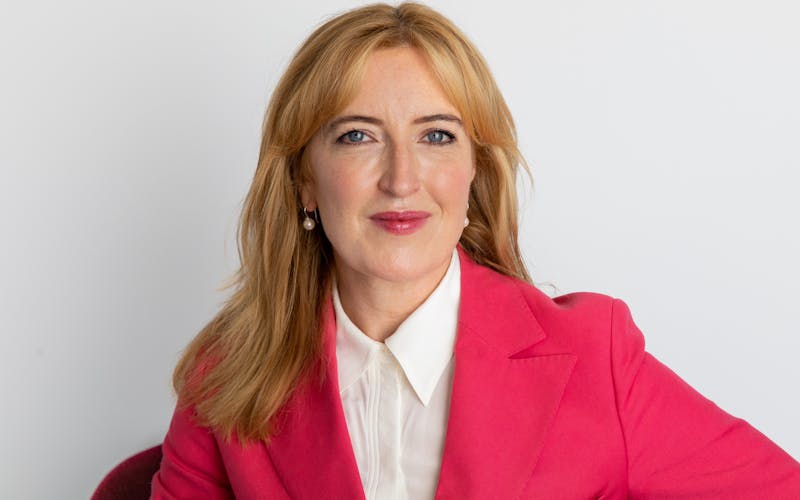
Katy Wickremesinghe: You grew up in Glasgow, where and how did the journey of photography begin for you?
Rankin: Being Scottish, you are raised to have this incredible sense of self-belief and a drive to succeed. My parents always encouraged me to ask questions and that taught me not to take the world or people for granted. My favourite word as a kid was “why?”. Not a negative why, an inquisitive why!
My relationship with photography started whilst I was studying a foundation in accountancy. For my first term I found myself in halls with a lot of art, design and architecture students. I was doing nine-hour homework-filled days whilst the art students were getting together to discuss philosophy, culture, fashion - they just seemed to be having a lot more fun. Two terms later, while we were on Easter break, I called my friend who I knew had a camera and asked if he’d show me how to use it. We went to a park, I looked through the lens, clicked the shutter release and it was a real lightbulb moment.
You’ve said in a few of your interviews that you’ve felt “othered” – that you didn't feel like you fitted into traditional systems. You are now the creator of many luxury conversations. How did your experience shape the way you created your photographs and view the world of luxury?
I’m from a working class background. It meant when I found photography, I was almost entirely uninfluenced by anyone from my family. That has always made me feel a little bit like an outsider, but it also means my influences are my own. I was like a blank sketchbook and I filled those pages myself.
To me, anything to do with taste is very pragmatic. So if a piece of work is made well and is the best in its category then, as long as I feel the passion, I’m in. Once I’m in, I’ll be the biggest advocate or ambassador that I can be – especially when I’m collaborating with brands. Once a brand onboards me, I can’t help but become a bit of a guardian.
> Read our report from last year's Walpole British Luxury Summit, which featured this talk
You’ve shot so many iconic people. Can you share with us a little around which shoot has been particularly memorable to you and why?
David Bowie was a true icon – so much so that I thought he was going to arrive on-set and be uber cool, almost cold. But he was the exact opposite. He was so enthusiastic, like Tigger from Winnie the Pooh! I realised then I should always judge people by how they act in that moment in front of me.
Who would you most like to shoot and have not?
I would like to make a photographic sculpture of Donald Trump. In my work I’m always trying to create an image that does more than capture that person at that point in time. I want to create that picture, the one that tells you everything you need to know, and I’d be interested to know what my lens had to say about such a complex and divisive subject.
You are known for creating work on the cultural cusp, work that breaks rules. Do you think British brands have a fear of pushing these boundaries? And in your work, which images epitomise this most to you?
Yes, I really do. Whether it’s the digital revolution or fiscal fear, the fact of the matter is we are fantastic at being brave when we are making products, but we fall short when we communicate about them. It is so British to keep things safe, to stay in our lane and to not jump the queue. Perhaps that’s why British brands are so innovative in what they create, yet are so uninventive in how they showcase those same creations.
And I get it, there’s been a devolution of the fourth estate by social media, and the pandemic led to a breakdown of personal interaction. But we have become so risk averse in brand comms that it holds us back. It’s not about shouting louder, it’s about clever communication. The best example I can give is our work with Rolls Royce: 'Rules Rewritten'. This Phantom campaign was our first big piece of work and we ripped up the rule book. While the world was wondering who the next Bond would be, we cast Gwendoline Christie as the female equivalent. Then we took the Phantom, made it muddy, had her wash it, threw on a Rolls surfboard and had it smash through the wall. It was the perfect clash. We took the fact that Rolls is a best-in-class luxury item and then made it culturally relevant through a piece of content that really addressed the audience. Apparently they even got a few calls from clients asking to buy the surfboard!
Now it’s not about suddenly becoming rebellious or anarchic and losing that refinement. It’s about understanding how and when those contrasting qualities can coexist. People were moved, good or bad, and the skew we started is that now Rolls Royce clients are 10 years younger than they were. To top it off Gwendoline was on the cover of GQ just after launch - it was a real moment.
You’ve always been adept at understanding not just the image creation but the bigger play: where the image is used and how. There is no better example of this than your iconic work with Jefferson Hack in creating the magazine Dazed and Confused - not to mention Another and Hunger. Why and how in 1991 did you and Jefferson create Dazed?
I went to college to become a photographer, but on my first day I was introduced to the student magazine. My education became photography and publishing running in parallel.
What do you attribute the success and endurance of Dazed, Another and Hunger to in a world where traditional publishing is struggling?
A combination of four things. First, it started from a place of passion. We tried to make it the best it could be and then tried to finance it. Second, we made the magazine for ourselves, as we knew there were others like us that would read it - so it was entirely authentic. Third, Jefferson and I made a deal very early on that when we got too old we would become mentors to a new generation – so it would stay relevant. And fourth, we agreed that we would never be scared to embrace new technology or ideas. We would be open to pushing ourselves and never become too comfortable.
For me the magazine was always a Trojan horse. It looked like a style magazine, but it was really an arts and culture publication. Plus we were always doing extra things: exhibitions, clubs, records, documentaries. We did one of the first masthead TV shows. We thought of Dazed as a platform before the word meant what it means now.
You have work in the V&A and worked with countless luxury brands, but you've also shot the everyday person on the street. Do you think photography is being elevated as an art form?
Absolutely. I’ve just read the Richard Avedon biography, What Becomes a Legend Most – he started a lot of the 'photography as art' discussions in the Sixties and Seventies. It's an incredible insight into why he was the best fashion and portrait photographer, and why his work elevated to the point it was art through the medium of photography. The answer is intent, positioning and authenticity. If you want to understand photography as art, it's a must read.
We talk a lot about culture as a litmus for where brands and businesses need to go. Where do you think the reference points for culture currently lie?
In today’s world, everywhere - that is why it feels more complicated. However, that is also why editorial and strategic thinking will garner the best results because editorial and strategic approaches understand that trends are just a verbalisation of what and where the shifts in culture are. I really think marketing as entertainment is the biggest growth area for brands wanting to get into culture.
Do you think the fact that image-making has become more universal (even in the tools we use, such as iPhones) is good or bad for brands?
I think it’s bigger than brands. This is a social and cultural phenomenon that means we are all using photography in a way it has never been used before. We are all using photography on a daily basis to communicate with each other, to share how we are and to show what we like. There is some good in that, but also a lot of bad. I see my job as being at the forefront of this every day. Knowing how, where, what and why it will affect us. Then, consequently, where brands sit within that.
I know, from your own words, you’ve said you never thought you would ever be one to set up an agency. What was it that put in motion RANKIN CREATIVE?
I wanted to be at the source of where ideas are commissioned and brands are influenced. That and the fact that modern-day brand building has changed. Brands today need editorial and cultural specialism from people who've lived it. For me, commercial and creativity go hand-in-hand. Also the old paradigm was very process-driven – now it’s like the Wild West and I have a clear understanding of how to make it work for brands and agencies alike.
RANKIN CREATIVE has put you into spaces and places where, whilst you aren’t controlling the camera, you are controlling the image and working with a team of specialists on your “Questioning Everything” philosophy. Can you explain how you work in your business to create campaigns?
On a basic level, I am the litmus test. My inquisitive nature means I’m looking at the things that are changing and influencing us everyday. And being Scottish means I am also a bit like the kid from the Hans Christian Anderson fable The Emperor's New Clothes – I see the elephant in the room and I can’t help but ask what we are going to do about it.
It’s important to call things out. Like the Metaverse basically being an ad campaign for Meta, or say this ‘new’ quiet luxury trend just really being minimalism - that’s not new, it’s just been on a TV show. The team we have built knows how to turn that understanding into a language that is persuasive across all layers and levels within a business.
We often talk about the idea of Britishness and being “proper” in the way we do things. How is your agency challenging this and what would your advice be to brands wanting to stand out on the British stage in their image making?
The world has turned upside down and it isn’t stopping. You have to constantly have an opinion on, and an approach to, new developments. For example, if you want to understand AI you need to watch Tristan Harris' ‘Centre for Humane Technology’ talk. The media aren’t covering that - but they 1000% should be. Then you need to take the knowledge you learn from that and actually think about it. Examine it, analyse it and work out how it’s going to affect us all.
In terms of standing out, it really does depend on what your brand is and which audience you want to reach - see it as a problem that needs to be solved. Then we, I, or someone like us small indies would get seriously inquisitive about how to solve it for you. But not just in one shot or campaign, but at a holistic level.
One campaign in my research which particularly stood out was around ageing and death which was influenced by the loss of your own parents. Can you tell us more?
It was for Royal London, a mutual insurance company who were started in 1861 as a benefit society to help you save for your funeral. The campaign itself was about driving societal change and getting people to talk about loss, grief and death. It was one of my favourite things to lead as I got to make a book called How to Die Well, which I think has to be a marketing first but it got approximately £20 million worth of press for the brand.
I really believe the British luxury industry has a responsibility, as well as the power, to drive societal change and cultural progression at a time when the forces that are meant to aren't. The industry can influence behaviour at every generational level. It should embrace that and take on taboos, not just paint a magical picture of the luxury life. And, finally, we should always protect and promote British creativity - the one power we are still first at in the world.
What are you most excited by in the next stage of your journey?
I always want to be working on what inspires me and what's new, as I know it will eventually be useful for either personal projects or for brand work. Whether that is what's new in photography, marketing, technology, luxury or, ultimately, culture - or whether that’s me photographing flowers in lockdown, the new is what gets me up in the morning.
Gaining knowledge and understanding these tools means you can use them to reflect your feelings about the world and incite change. The best example I can give at the moment is photogrammetry or volumetric capture – I was introduced to it by Damien Hirst. I went to his studio in 2019 and he said, “by the end of today you’ll want to be a sculptor”. And he was right – now I am!
> Find out more about RANKIN CREATIVE here
Photos by Adam Duke





